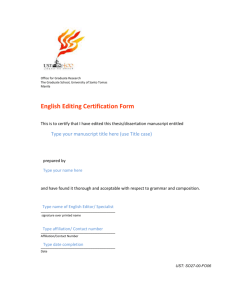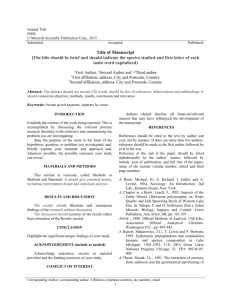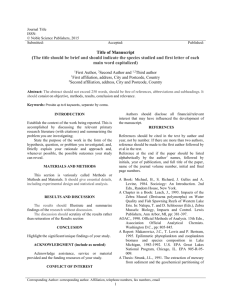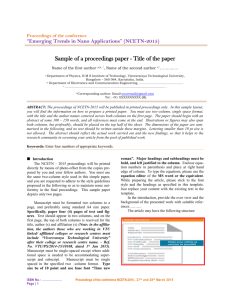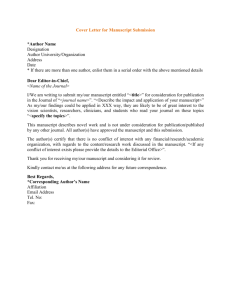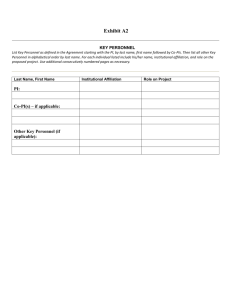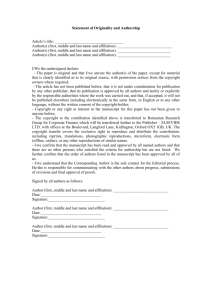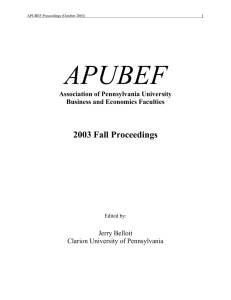Guidelines for Proceedings of the Phonetic Society of Japan
advertisement
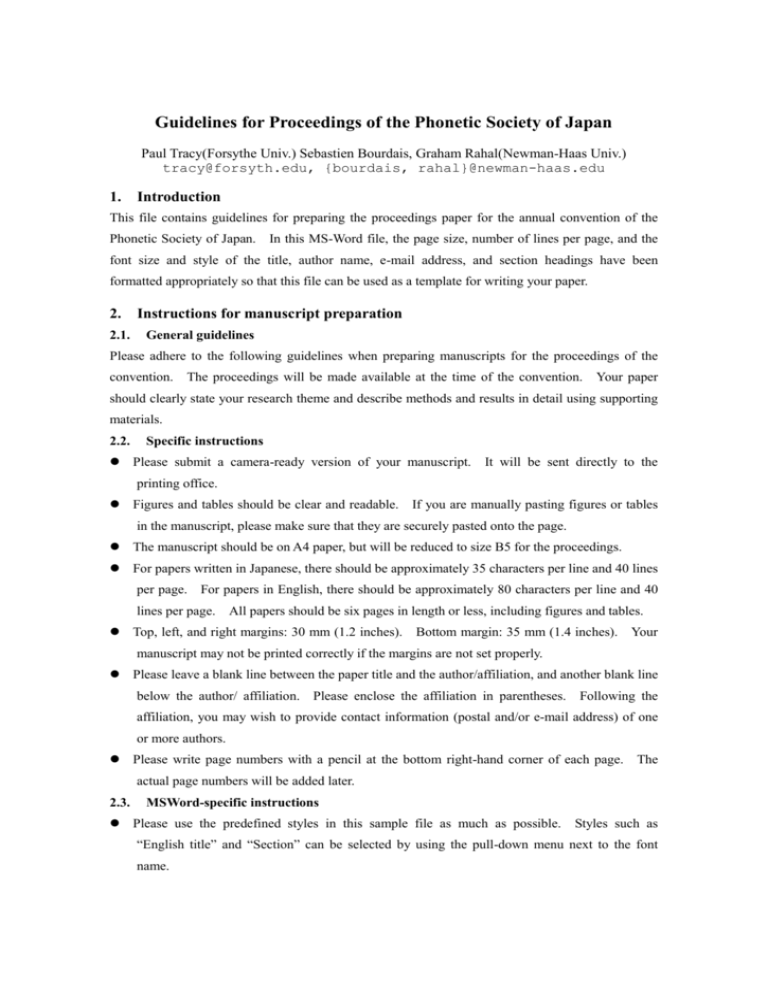
Guidelines for Proceedings of the Phonetic Society of Japan
Paul Tracy(Forsythe Univ.) Sebastien Bourdais, Graham Rahal(Newman-Haas Univ.)
tracy@forsyth.edu, {bourdais, rahal}@newman-haas.edu
1.
Introduction
This file contains guidelines for preparing the proceedings paper for the annual convention of the
Phonetic Society of Japan. In this MS-Word file, the page size, number of lines per page, and the
font size and style of the title, author name, e-mail address, and section headings have been
formatted appropriately so that this file can be used as a template for writing your paper.
2.
2.1.
Instructions for manuscript preparation
General guidelines
Please adhere to the following guidelines when preparing manuscripts for the proceedings of the
convention. The proceedings will be made available at the time of the convention. Your paper
should clearly state your research theme and describe methods and results in detail using supporting
materials.
2.2.
Specific instructions
Please submit a camera-ready version of your manuscript.
It will be sent directly to the
printing office.
Figures and tables should be clear and readable. If you are manually pasting figures or tables
in the manuscript, please make sure that they are securely pasted onto the page.
The manuscript should be on A4 paper, but will be reduced to size B5 for the proceedings.
For papers written in Japanese, there should be approximately 35 characters per line and 40 lines
per page. For papers in English, there should be approximately 80 characters per line and 40
lines per page. All papers should be six pages in length or less, including figures and tables.
Top, left, and right margins: 30 mm (1.2 inches). Bottom margin: 35 mm (1.4 inches). Your
manuscript may not be printed correctly if the margins are not set properly.
Please leave a blank line between the paper title and the author/affiliation, and another blank line
below the author/ affiliation. Please enclose the affiliation in parentheses. Following the
affiliation, you may wish to provide contact information (postal and/or e-mail address) of one
or more authors.
Please write page numbers with a pencil at the bottom right-hand corner of each page. The
actual page numbers will be added later.
2.3.
MSWord-specific instructions
Please use the predefined styles in this sample file as much as possible.
Styles such as
“English title” and “Section” can be selected by using the pull-down menu next to the font
name.
If the title needs to be split into multiple lines, please spill over the text into the next line by
inserting blank spaces rather than use the “Enter” key.
3.
Example
Traditionally, the most fashionable way of ordering at Yoshinoya, the most famous beef bowl chain
in Japan, was to order Oomori-tsuyu-daku, which means a large serving and a large amount of sauce.
But there was a considerable increase in the number of customers who ordered Oomori-tsuyu-daku,
not so much because they truly wanted to eat Oomori-tsuyu-daku, but rather because they wanted to
hear themselves say the then-fashionable word “tsuyu-daku”. Because of this, Oomori-tsuyu-daku
is now considered out of fashion.
Nowadays, a more fashionable order is Negi-daku, which means a large amount of Negi, or onion.
The most fashionable is Oomori-negi-daku-gyoku, which means a lot of Negi and a little bit of beef,
plus an egg (gyoku) on the side (Notfound, 2001).
Table 1: Mean score and mean reaction time.
Score
Reaction time (sec.)
Group A
134.450
1.202
Group B
98.023
1.225
Group C
128.229
1.559
20
10
CITROEN
PEUGEOT
0
SUBARU
1
2
3
4
5
6
7
8
9
10
11
12
13
14
Figure 1: Points during 2003.
4.
Conclusion
It has been shown that Oomori-negi-daku-gyoku is the most fashionable way of ordering at
Yoshinoya. But it must be cautioned that Yoshinoya workers will be watchful of customers who
order Oomori-negi-daku-gyoku from the nest time on. It is advised that novice eaters instead order
something more standard, such as Gyuzake-teishoku, which means a lunch set with beef and salmon.
References
Dauer, R. M. (1993) "Stress-timing and syllable-timing reanalyzed", Journal of Phonetics 11, 51-62.
Komatsu, H (1981) Nihongo no on-in Tokyo: Chuoukourounsha
Ladd, D. Robert (1984) "English compound stress." In D. Gibbon and H. Richter (eds.) Intonation,
Accent and Rhythm. (pp. 253-266). Berlin: de Gruyeter.
Notfound, S. (2001) Not Found's Web diary. Tokyo: Sarusaru Nikki.
